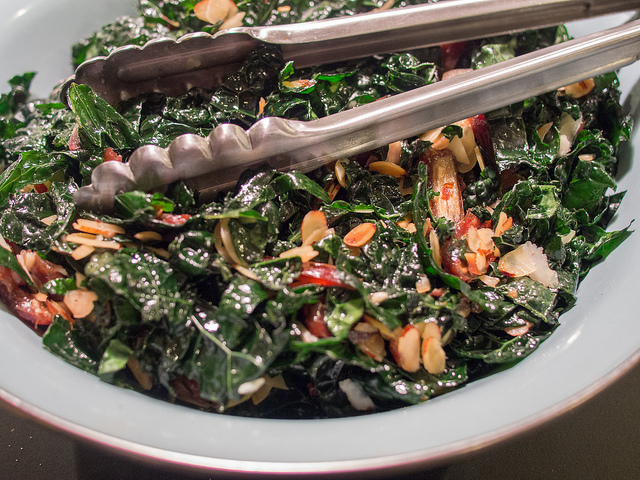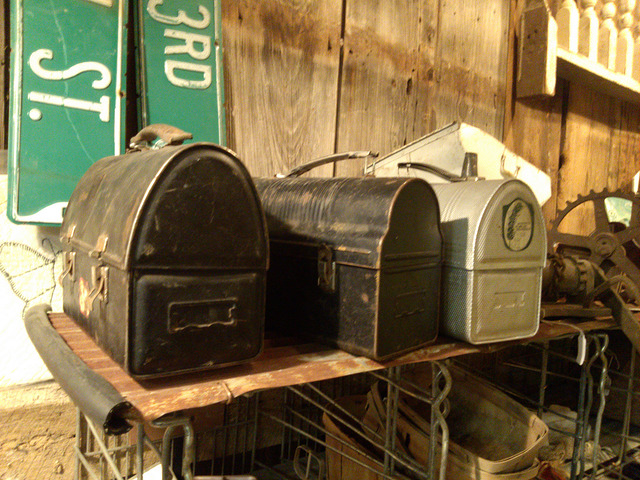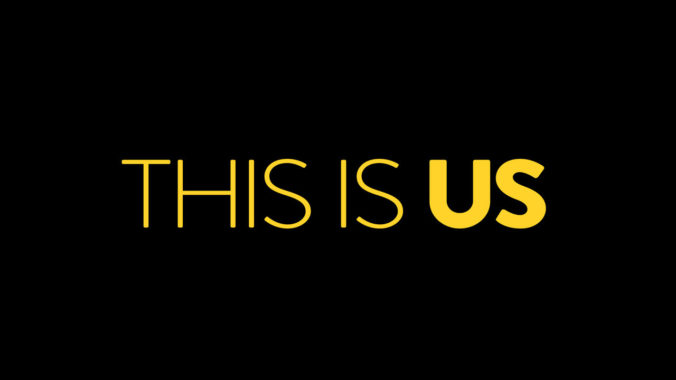Sir Ken Robinson writes, “there are two types of people in the world: those who divide people into two groups, and those who don’t.” I, like Brene Brown (I know! Twinsies!), do. I’m aware it’s dualistic and sometimes limiting, but it’s also quick and easy and sometimes a little fun.
So there are those people in the world, who, when they go to a restaurant repeatedly, they order something new. And there are those of us who [do it right and] order the same thing over and over. When I love something, I keep returning to that satisfaction. Case in point: I’ve only ever had one dish at Macaroni Grill, the Pasta Romano. This was before my body stopped digesting refined white flour, but I told friends that if I were ever to end up on death row and needed to name my final meal, this would be it. (These friends love me, but gave me concerned looks after that statement. What? You haven’t thought about that? I asked.) Now, a quick search of Macaroni Grill’s website tells me that the Pasta Romano is no longer available. Please, a moment of silence. (They didn’t even tell me ahead of time, so that I could get one final taste?! How dare they! What are they, heartless animals?)
Back to the main-ish point: For those of us in the group who re-order over and over, how do you quickly and efficiently order at a new venue, especially when a friend is sharing a captivating story and you’re on limited time? For myself, I look for key words: avocado or the phrase “covered in queso.” I must tell you: this system has yet to fail me.
Yesterday, in an adventure to Northstar Cafe- at which I had previously dined, but I’m by no means a “regular” – I knew I needed food with color (a white potato and a white chicken boob just wouldn’t serve me well) so I limited myself to the salad section, even through there was an entire area of the menu devoted to “wood fired pizzas.” Sometimes I defy my bread-hating body, but yesterday was not that day. Because I’m a rule follower when I believe the rule is for me, I stayed in the salads.
Can we please talk about the Townsfair Salad? I feel like this experience warrants public discussion. Who knew that dates belong in a salad? And, to that point, why didn’t that person tell me? After my bowl arrived, I looked at it and thought, “never would I ever put these things together.” The greens were green – like kale green, which I typically only intake through juicing because of kale’s inherit rigidity. And it sat in there with cabbage and what I believe to be radicchio, but I’m not up on my forms of leaf chicory. There was some chicken, which could have easily stayed home that day, and there were chickpeas, which are my least favorite of the legumes, but in this bowl they became magnificent.
Also, the nuts. This salad had sustenance. There were at least 3 kinds of nuts, IMHO, but the menu says explicitly almonds. And then there were the stars: avocado, goat cheese, and (the aforementioned) dates. Never in my life have I put all of these things together, especially in the absence of bacon, and expected magic to happen, but this is why I’m not paid by the Northstar Cafe to make menus. Whoever does have this job is: a) doing a better job than the guy at Macaroni Grill, who apparently gets rid of the best work of the last guy, and b) knows secret potions.
This chef also knows that dates and goat cheese behave much like my hilarious friends Randy and Brooke, and when you get them at the same time you can go ahead and just wait for the tears of enjoyment to start rolling down your sore little cheeks. Some things just go together. Goat cheese, by itself, perhaps on a cracker? Meh. But in a bowl of greens, nuts, legumes, and DATES? Let’s just say it was better than my senior prom.
I have watched my children tear apart delightful dishes time and again, or ask to order theirs without an unfavored ingredient. I understand some slight aversions, my own being tomatoes, if they’re not grown in an actual garden and harvested in the last day or so. But I’m now in that group of people who now believes you simply have to trust the chef. It might not be about loving goat cheese, it’s about loving goat cheese in this element. In this dish. Right here. If I had dismissed the Townsfair on the merits of goat cheese, I would’ve missed the magic.
Donald Miller writes in A Million Miles in a Thousand Years that when we leave a movie theater and decide that the movie we just saw wasn’t that good, we don’t automatically preclude movies from the realm of enjoyment. We haven’t decided that all movies are bad, just that movie was bad. Similarly, we can’t observe that goat cheese is always bad, but perhaps sometimes it can be overused or cheaply made.
And life, as well, isn’t always of one essence. I think we can trust the chef. There’s a power in the universe that can take lackluster chickpeas, toss them with a dazzling vinaigrette, and by the power of the presence of avocado, suddenly we have hope for the chick pea. The chick pea doesn’t ruin the salad, it gets transformed by the power of the salad coming together in oneness.
Dissected, life can become a bunch of little things we hate. We can spend our energy picking around, pushing aside and avoiding what we normally don’t appreciate. Or we can take a big bite of the whole thing, tossed together. Some elements are our favorite. Some are not. Some are enjoyed more in partnership with other things. But ultimately, it’s good. When you go to a worthwhile restaurant, you can trust the chef.
Just look for the words “avocado” or “covered in queso.”


